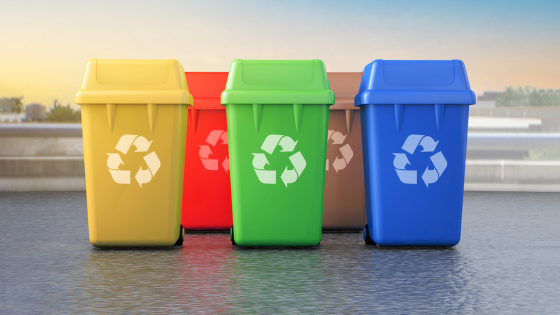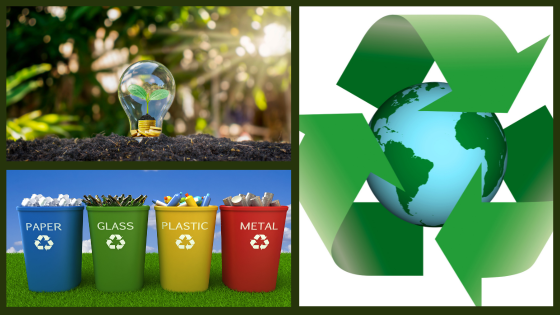Today’s post covers a few efficient ways to reduce waste and improve carbon emissions as a business. Waste is a problem that’s common amongst many businesses and how you deal with excess wastage is telling to all those who choose to buy from you or see you in the public domain. The more you can do to reduce your wastage and improve your carbon emissions, the better your reputation will likely be as a result. Reducing waste is easy enough with the right methods and in turn, you’ll improve carbon emissions as a result. With that being said, here are some helpful tips!
7 Ways To Reduce Waste and Improve Carbon Emissions As a Business
 1. Use Less Packaging and More Sustainable Products
1. Use Less Packaging and More Sustainable Products
Packaging can be a hefty contributor to wastage, especially when it’s not recyclable. A lot of businesses will end up wasting a lot in the form of packaging, which is why it’s something to tackle and focus on when you’re trying to reduce your own company’s usage.
There is a lot of recyclable packaging that’s highly affordable. You also have packaging that is made from recycled plastic and other packaging that can be reused over and over again.
Sustainable products should be a focus point for any business when you’re looking to minimize wastage. Sustainability is something that will help reduce your carbon emissions and encourage other businesses to follow suit.
Look at what you can do to improve packaging efforts and how this might influence your bank balance and more importantly, the reputation of your business with your customers.
2. Make Use of Renewable Energy
Renewable energy is easy enough to get hold of nowadays and nothing is more effective than solar panels. What used to be quite a rarity for households is now more common. Solar panels are great for businesses to take advantage of because you end up generating more energy yourself, rather than taking it from the national grid.
The use of renewable energy has become more popular, especially through solar panels, so there’s much opportunity to be had as a business to take advantage of it. Over time, it’s going to make a big difference to your energy consumption both financially and for the environment. If you’re not quite sure how to incorporate renewable energy into your business, then it’s definitely worth doing the research and finding what you could make use of to begin with.
3. Recycle Everything and Anything
Recycling is a great way to reduce clutter within the business but it can also be a great way to make use of disposing of your belongings as a business with more consciousness of the environment. Look at how much you’re recycling right now and the stuff that you’re not recycling and simply throwing away. Is there an opportunity present where you can recycle what would otherwise be chucked into the trash?

Check what needs recycling and what services and operations are available to make recycling easier. You might want to set up a system that makes it easier for your employees to recycle their work belongings more easily. When you recycle, you reduce the need to source raw materials and purchase things for the business that perhaps aren’t necessarily needed.
Put systems in place that help encourage recycling and if something isn’t working, then reassess and try something new. Your employees need to know that you have a recycling scheme in place, so ensure there’s enough signage and knowledge of its existence.
4. Work With Your Employees
Employees are responsible in part for their contributions towards the business’s carbon emissions. From leaving their desktop monitors on standby instead of turning them off, to chucking out old furniture in the trash instead of having it collected from the right companies.
There’s plenty that your employees can be doing and it’s important that as a business, you’re doing your bit to help. Encourage your employees to make meaningful changes to their waste use in the business and if they need help in recycling and disposing of waste more efficiently, provide them the services and budget to do so. Employees should also be taught and trained in how to reduce waste and the importance of reducing carbon emissions. If you’re finding it difficult to get employees on board when it comes to reducing waste, it’s a good idea to offer incentives.

Whether it’s cycle-to-work schemes that provide discounted or free bicycles, to having an employee of the week or month who gets a voucher to use in their favorite shop for recycling the most for that week or month. Training is a great way to teach your employees about waste and carbon emissions, including pointing them to resources such as this waste industry glossary.
5. Use Sustainable Suppliers
Sustainability is an important part of running a business and who you work with is influential on how sustainable you are in general. Consider what sustainable suppliers you might be working with right now and how they approach sustainable and eco-friendly best practices. If they’re not doing much to help with the environment, then you might want to look to switch your suppliers and align with those who are keen to help with carbon emissions.
Being able to use more sustainable methods and reduce energy and water consumption is helpful to the environment. That’s why it’s imperative you’re choosing better suppliers who put sustainability first and foremost. In general, there are many ways that your business can be sustainable and it’s something that you should be looking to adapt to in all areas of your business where possible.
6. Offset Your Carbon
Your carbon contributions are something that you could look to offset elsewhere. Businesses can reduce their net carbon emissions by offsetting their carbon dioxide. You can do this by using off-site suppliers or producing your own energy supplies through renewable energy. Solar panels have become extremely popular and this is a great way to ensure your carbon emissions are offset more effectively.

There are other ways that you can offset your carbon like recycling as an example that’s already been mentioned. Shifting to cloud computing can be helpful as it’s all digital and doesn’t require physical software or supplies. Buying energy-efficient equipment and appliances can also be helpful in offsetting your carbon and reducing your carbon usage in general.
7. Go paperless
One of the biggest influences that you could make as a business this year is to go paperless. While it might seem like a hard thing to achieve for some businesses, it’s actually very simple to do. There are a lot more businesses that operate totally remote or have a hybrid setup. What you’ll soon find is that a lot of what is done in business nowadays is done online and through digital documents. That means you don’t need to go paperless
Going paperless can save you a lot of money as well as the impact on the environment through excessive use of printing materials and running costs for these big printers. Look at how you could reduce the paper used within your business and aim to slowly phase it out or minimize its use as much as possible. If you’re struggling to adapt to a paperless existence as a business, then consider what you can reduce where possible so that at least you’re making somewhat of an active contribution to less paper usage.
Final Thoughts
Now that you know how to reduce waste and improve carbon emissions as a business, it is definitely something you should aim for within your company this year. Use these tips to help reduce your own business’s contribution to waste and stamp out as much of your carbon usage as possible in 2024 and beyond.

